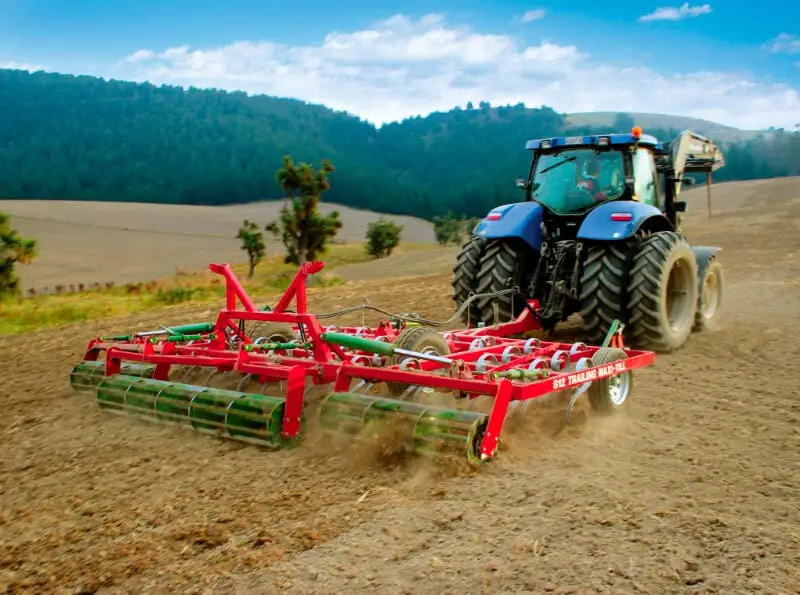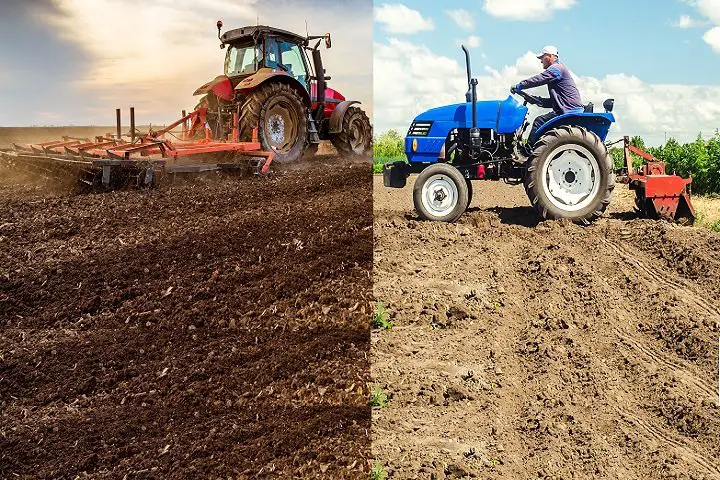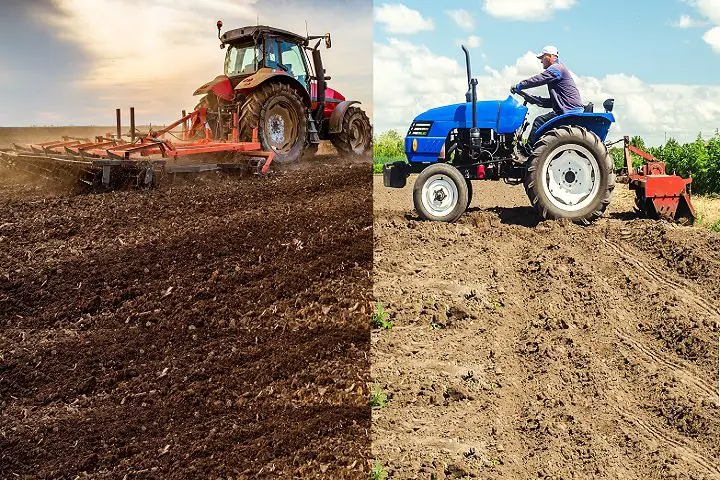This post may contain affiliate links which means I may receive a commission for purchases made through links. Learn more on my Private Policy page.
In this informative article, you will explore the fascinating world of cultivators. Discover the various types of cultivators and uncover the secrets of how they are utilized. Whether you’re a gardening enthusiast or simply curious about agricultural machinery, this article will provide you with a comprehensive understanding of these essential tools. From the versatile tiller cultivators to the mighty rotary cultivators, you will soon be equipped with the knowledge to navigate the vast array of options available. So, let’s embark on this journey together and uncover the wonders of cultivators.

This image is property of www.rataequipment.com.
Cultivators for small-scale gardening
When it comes to small-scale gardening, cultivators play a crucial role in preparing the soil for planting and maintaining the garden’s health. There are several types of cultivators suitable for this scale, each with its own unique features and benefits.
Tiller Cultivators
Tiller cultivators are a popular choice for small-scale gardening. They are designed to break up the soil and mix it with organic matter, making it suitable for planting. Tiller cultivators come in different sizes, such as mini-tillers for small gardens and mid-size tillers for larger areas. They have rotating blades that dig into the ground, making it easier to loosen compacted soil and remove weeds.
Handheld Cultivators
For smaller garden spaces or tight corners, handheld cultivators are an excellent option. These lightweight tools allow you to manually break up the soil and remove weeds with ease. Handheld cultivators usually have three or four prongs that can be driven into the soil, making them effective in loosening the top layer and improving aeration.
Electric Cultivators
Electric cultivators are ideal for small-scale gardening, especially if you prefer a less physically demanding option. They are lightweight and easy to maneuver, making them suitable for gardeners of all ages and physical abilities. Electric cultivators typically have rotating tines that dig into the soil, helping to break it up for planting. They are quieter compared to gas-powered alternatives and require minimal maintenance.
Cultivators for medium-scale gardening
If you have a medium-sized garden or require more power for your gardening tasks, there are cultivators specifically designed to meet your needs. These cultivators can handle larger areas, making them suitable for medium-scale gardening projects.
Rotary Cultivators
Rotary cultivators are a versatile choice for medium-scale gardening. They have a rotating set of blades or tines that dig into the soil, effectively breaking it up and mixing organic matter. With their adjustable depth settings, rotary cultivators allow you to prepare the soil to the desired depth for planting. They are often self-propelled, making them easier to maneuver over larger areas.
Rear-Tine Cultivators
Rear-tine cultivators are known for their power and efficiency, making them a popular choice for medium-scale gardening. These cultivators feature large wheels with tines located at the rear. The wheels help to propel the cultivator forward while the tines work to break up compacted soil. Rear-tine cultivators are typically self-propelled and offer adjustable tilling depths, making them versatile and suitable for various soil types.
Cultivators for large-scale farming
Large-scale farming requires heavy-duty machinery to cover significant areas efficiently. Cultivators for this scale are designed to handle the demands of extensive farming operations and offer the necessary power and capabilities.
Chisel Plow Cultivators
Chisel plow cultivators are commonly used in large-scale farming operations. These cultivators feature long, narrow shanks with replaceable points attached to them. As they are pulled through the soil by a tractor, the shanks create a series of narrow slits, which helps to break up compacted soil and increase aeration. Chisel plow cultivators are particularly useful for dealing with deep-rooted weeds and improving soil drainage.
Row Crop Cultivators
Row crop cultivators are designed to cultivate the soil between crop rows, making them perfect for large-scale farming. They typically consist of multiple shanks or sweeps that can be adjusted to the desired width to match the spacing between crop rows. Row crop cultivators are often attached to tractors and pulled along the rows, effectively removing weeds and loosening the soil without damaging the crops.
Manual cultivators
In some cases, manual cultivators can be a practical choice, especially for smaller garden spaces or areas where access to power sources is limited. These cultivators require physical effort but offer precision and control over the cultivation process.
Hoe Cultivators
Hoe cultivators are simple yet effective tools for small-scale gardening. They consist of a long handle with a flat, sharp blade at the end. Hoe cultivators are perfect for shallow tilling, breaking up soil clumps, and removing weeds. By pushing and pulling the hoe through the soil, you can create smooth planting beds and maintain the overall health of your garden.
Cultivating Forks
Cultivating forks, also known as garden forks or digging forks, are another manual cultivator option. These forks have multiple sturdy tines attached to a handle and are used by thrusting them into the ground and turning the soil. Cultivating forks are excellent for loosening compacted soil and removing rocks, debris, and weeds.

This image is property of cdn.tractorkarvan.com.
Motorized cultivators
Motorized cultivators offer power and efficiency, making them suitable for larger garden spaces or farming operations. These cultivators eliminate the need for manual labor, enabling you to cover more ground in less time.
Gas-Powered Cultivators
Gas-powered cultivators are a popular choice for medium to large-scale gardening projects. These cultivators are typically equipped with a gasoline engine, providing them with sufficient power to break up compacted soil and remove weeds. Gas-powered cultivators are self-propelled and offer adjustable tilling depths, making them versatile and suitable for various soil types.
Tractor Cultivators
Tractor cultivators are heavy-duty machines specifically designed for large-scale farming. These cultivators are typically attached to tractors and pulled through the soil. Tractor cultivators come in various configurations, such as harrow attachments, disc harrows, or spring tooth harrows. They are perfect for breaking up hard soil, removing weeds, and preparing the land for planting.
Specialized cultivators
Certain gardening or farming operations require cultivators with specific features or designs. Specialized cultivators can ensure optimal results when dealing with particular crops or terrain.
Orchard Cultivators
Orchard cultivators are designed to navigate the narrow spaces between fruit trees, making them perfect for orchard management. These cultivators are typically smaller in size to fit the tight spaces between trees and have adjustable tines or blades to prevent damage to the tree roots. Orchard cultivators effectively remove weeds and improve soil health, contributing to the overall productivity of the orchard.
Vineyard Cultivators
Vineyard cultivators are essential tools for maintaining vineyards, where precision and maneuverability are crucial. These cultivators are specially designed to work around grapevines, ensuring minimal damage to the plants. Vineyard cultivators often have adjustable tines or blades to accommodate different vine spacing. They help to control weed growth, improve soil aeration, and manage the overall health of the vineyard.

This image is property of cdn2.hubspot.net.
Tiller Cultivators
Tiller cultivators play a significant role in both small-scale gardening and larger farming operations. They are versatile tools that can prepare the soil for planting and maintain its health throughout the growing season. Tiller cultivators come in different types suitable for various needs and soil types.
Front-Tine Tillers
Front-tine tillers are popular choices for small to medium-scale gardening projects. These tillers have rotating blades located at the front, which dig into the soil as you push the machine forward. Front-tine tillers are relatively easy to maneuver and suitable for cultivating smaller garden plots, flower beds, or vegetable gardens.
Rear-Tine Tillers
Rear-tine tillers are heavy-duty machines designed for larger areas or more challenging soil conditions. These tillers feature rotating blades located at the rear, providing increased digging power. Rear-tine tillers are usually self-propelled and offer both forward and reverse tilling modes, allowing you to tackle compacted soil or dense vegetation effectively.
Rotary Cultivators
Rotary cultivators are versatile tools suitable for various gardening and farming tasks. They perform well in situations where tilling, weeding, and soil mixing are needed. Rotary cultivators come in different types, each offering its own advantages.
Hoe-Rotary Cultivators
Hoe-rotary cultivators combine the functionality of both hoes and rotary tillers. They have rotating tines or blades that dig into the soil, similar to traditional rotary cultivators. However, hoe-rotary cultivators also have handles that allow you to push and pull the tool, providing greater precision and control. These cultivators are perfect for working in tight spaces or around delicate plants.
Blade-Rotary Cultivators
Blade-rotary cultivators are designed for heavier tasks, such as breaking up compacted soil or incorporating organic matter into the ground. These cultivators have sharp blades attached to a rotating shaft, which effectively cuts into the soil, creating a fine tilth. Blade-rotary cultivators are often used in larger farming operations or when preparing the soil for planting.

This image is property of images.squarespace-cdn.com.
Chisel Plow Cultivators
Chisel plow cultivators are heavy-duty machines used primarily in large-scale farming. These cultivators effectively break up compacted soil, control deep-rooted weeds, and improve soil aeration. Two common types of chisel plow cultivators are recognized for their specific features and uses.
Moldboard Chisel Plows
Moldboard chisel plows are equipped with specialized shanks that can reach deeper into the soil than traditional chisel plow cultivators. These shanks feature replaceable moldboards, which help to lift, break, and turn the soil. Moldboard chisel plows are particularly effective in preparing the land for planting and managing significant weed infestations.
Sweep Chisel Plows
Sweep chisel plows, also known as field cultivators, are designed to prepare the soil and control weeds in large-scale farming operations. These cultivators have shanks with sweeps attached to them, which cut through the soil and remove weeds as they are pulled through the fields. Sweep chisel plows are versatile tools suitable for various soil types and can cover significant areas efficiently.
Row Crop Cultivators
Row crop cultivators are essential tools for larger farming operations, where precision is key. These cultivators work specifically between crop rows, effectively removing weeds and loosening the soil without damaging the crops. There are different types of row crop cultivators available, each offering unique features and benefits.
Single Gang Cultivators
Single gang cultivators consist of a single set of shovels or tines arranged in a straight line. These cultivators are typically adjustable, allowing you to match the spacing between the crop rows. Single gang cultivators are often pulled behind a tractor and effectively remove weeds on either side of the rows, enhancing crop growth and increasing yield.
Double Gang Cultivators
Double gang cultivators feature two sets of shovels or tines, offering greater coverage and efficiency compared to single gang cultivators. These cultivators are ideal for larger farming operations where time and labor efficiency are crucial. Double gang cultivators effectively control weeds and loosen the soil between double rows of crops, contributing to improved crop health and productivity.
In conclusion, cultivators are essential tools for any gardener or farmer looking to prepare their soil and maintain their crops’ health. Whether you have a small garden or a large-scale farming operation, there are cultivators specifically designed to meet your needs. From manual cultivators that offer precision and control to motorized cultivators that provide power and efficiency, the variety of cultivators available ensures that there’s an ideal option for every situation. So, choose the right cultivator for your needs and watch your garden or field thrive. Happy cultivating!

This image is property of img.over-blog-kiwi.com.
This post may contain affiliate links which means I may receive a commission for purchases made through links. Learn more on my Private Policy page.

